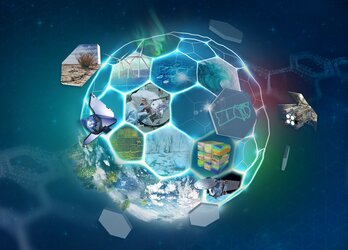Module Internal Robotics
Space A&R that falls in this category provides manipulation ability to operate equipment inside Microgravity Space Laboratories.
The equipment may be originally designed for crew (Astronauts) or for robotics operation.
Space Laboratories are generally composed of separate payloads which investigate specific microgravity sciences (e.g. Material Science, Fluid Science, Biology and Physiology)
Payloads are generally composed by storage areas, processing facilities and diagnostic instruments.
In operational terms, a typical cycle of scientific investigation can be broken in the following activities:
- Prepare facility for processing
- Retrieve test sample from storage area and place it in a processing facility
- Process the sample
- Retrieve the sample from facility and store it
Type and order of activities may change, according to the payload, however for a given payload these activities need to be performed for several samples.
The need to repeat operations hinted the Automation and Robotics Section to investigate in the late 80’s the use of a robot. A first Industrial Study was initiated in 1987, “Robotics Spacecraft Servicing and Assembly” (ROSSA) followed by the “Equipment manipulation and Transportation “ (EMATS) study in 1988.
Study and analysis work was put in practice with the realisation of 2 testbeds: the “Internal Automation and Robotics” (IARTTB), in 1990, and the “Columbus A&R Testbed” (CAT) in 1991. This last has evolved, through several additions, into the Internal A&R Testbed .
Several R&D activities were initiated to investigate programming (e.g. ARTS) and operation (e.g. ROCAT) of the robot.
In 1992 the A&R Section studied the “Biorobot”concept being a robot dedicated to a single payload.
In 1993 A phase-A activity was finally initiated. The “Automated Manipulation and Transportation System” (AMTS) unfortunately did not continue towards an operational system due to the lack of support from the ESA programme responsible for ISS development.
In the late 90's the Italian Space Agency (ASI) re-elaborated the Biorobot concept and named it “Payload Tutor” (PAT). The system was conceptually designed with the help of ESA's A&R Section and proposed by ASI to NASA for a technology demonstration programme. Though the proposal was accepted, PAT did not materialised due to lack of funding.
The Internal A&R Testbed at the A&R Laboratories showcases all the different technologies developed for the application of Module Internal Robotics.















 Germany
Germany
 Austria
Austria
 Belgium
Belgium
 Denmark
Denmark
 Spain
Spain
 Estonia
Estonia
 Finland
Finland
 France
France
 Greece
Greece
 Hungary
Hungary
 Ireland
Ireland
 Italy
Italy
 Luxembourg
Luxembourg
 Norway
Norway
 The Netherlands
The Netherlands
 Poland
Poland
 Portugal
Portugal
 Czechia
Czechia
 Romania
Romania
 United Kingdom
United Kingdom
 Slovenia
Slovenia
 Sweden
Sweden
 Switzerland
Switzerland

























